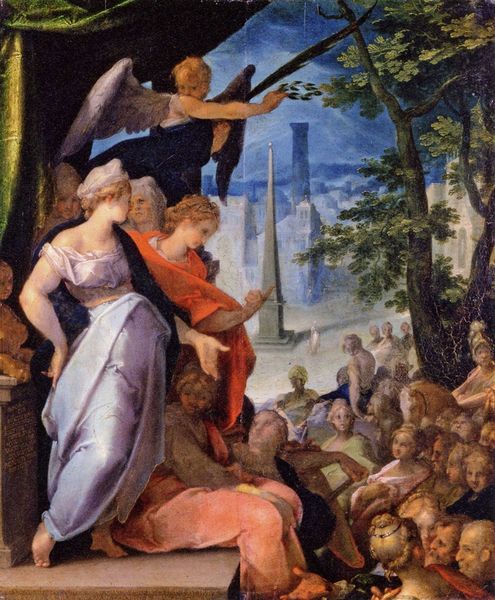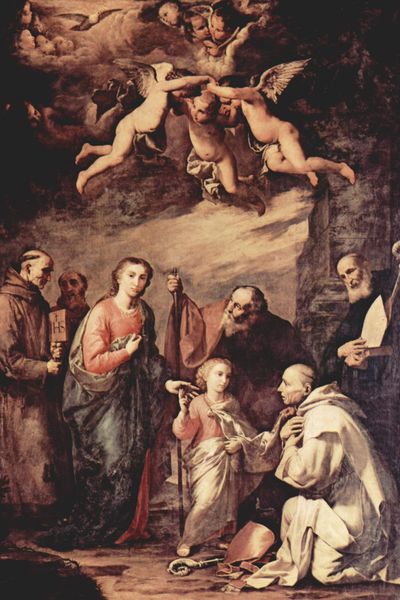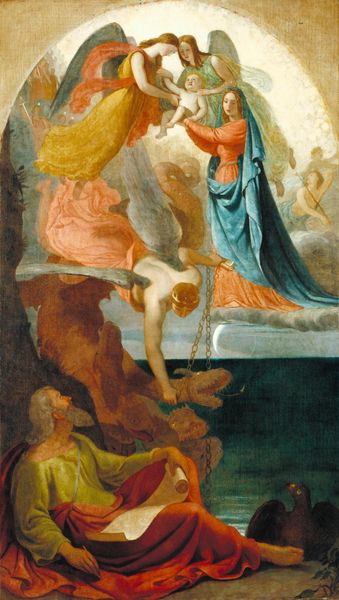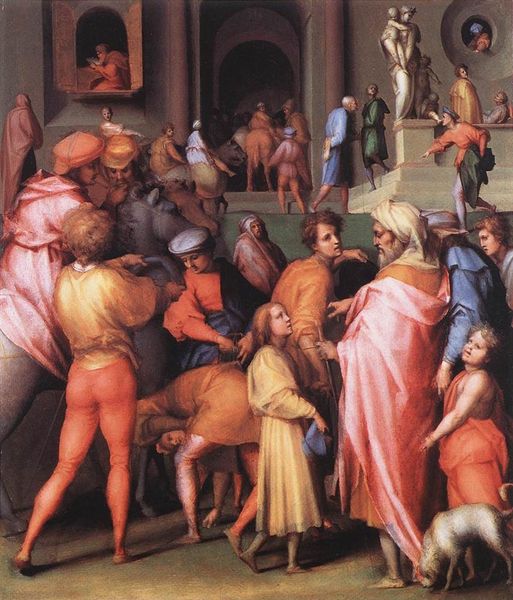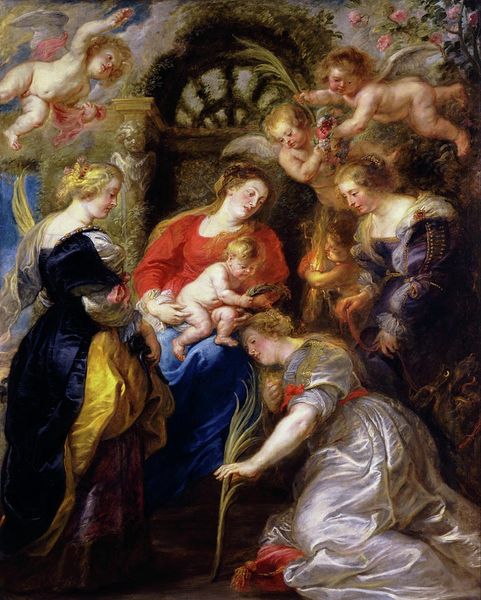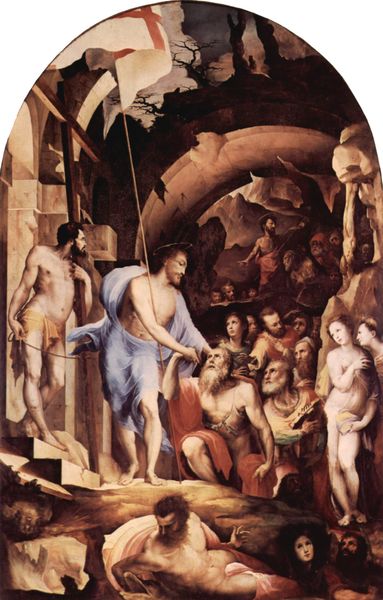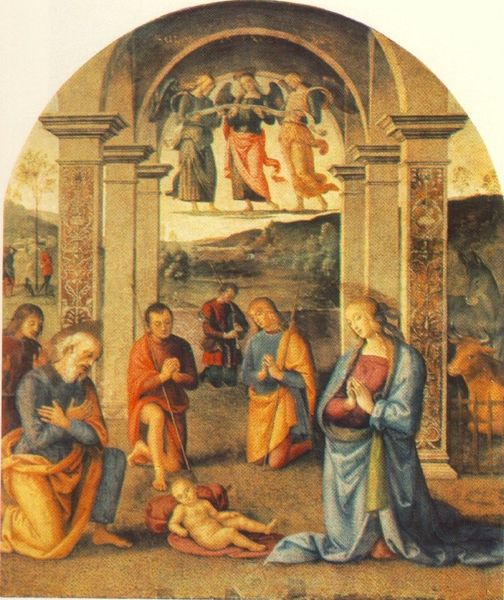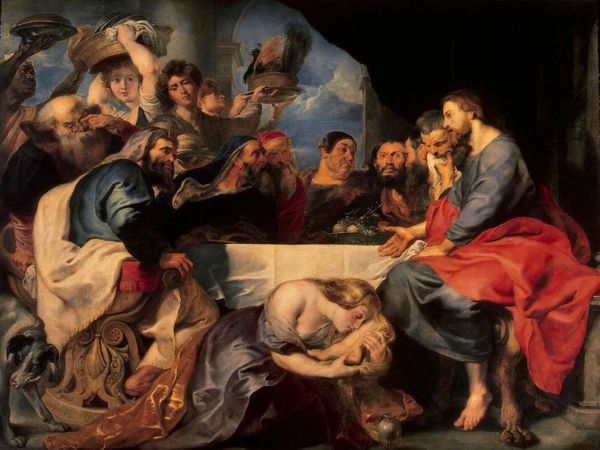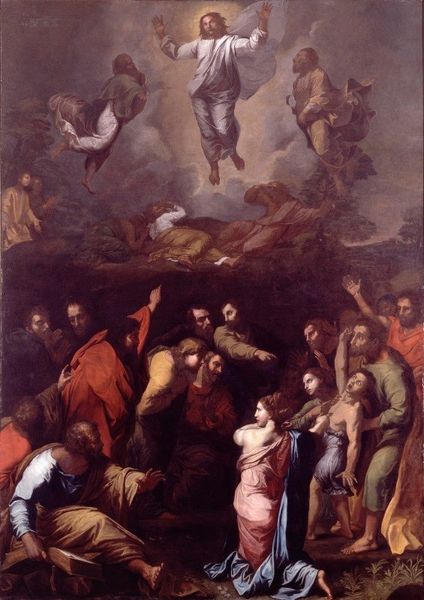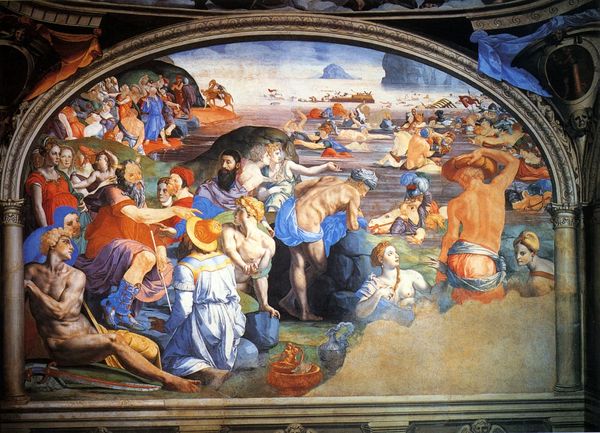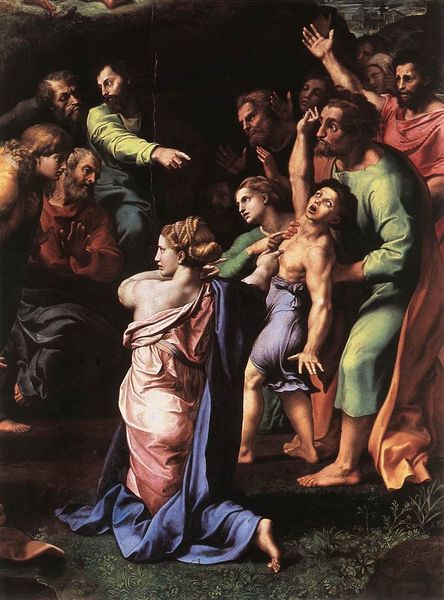
tempera, painting, oil-paint
#
portrait
#
high-renaissance
#
allegory
#
tempera
#
painting
#
oil-paint
#
figuration
#
oil painting
#
history-painting
#
italian-renaissance
Copyright: Public domain
Curator: Oh, this feels like stepping into a dream. There's something so ethereal about the swirling clouds and the gentle figures. Editor: Indeed. What we’re looking at here is “Coronation of Mary,” an oil painting dating back to about 1540, created by Domenico Beccafumi during the Italian Renaissance. It’s a magnificent piece. Curator: The iconography is particularly striking. The Virgin being crowned—a powerful symbol of ascension and divine approval. But what fascinates me is how the artist uses a limited palette to convey a sense of otherworldly serenity. It’s emotionally compelling. Editor: Absolutely, and we need to consider where this work was originally intended to be seen. Likely, a prominent church altar, reinforcing dogma about Mary’s significance. Its display would shape public perceptions of sanctity and power. Curator: And below, those figures with books… Do you see them as a symbolic representation of earthly knowledge being uplifted, almost touched by the divine light? Or perhaps, they are the doctors of the Church, present to legitimize the event? Editor: That's a compelling reading. Another possible view considers that these individuals remind us of Mary's pivotal role within a learned patriarchal structure, illustrating that faith and reason were tightly interwoven at the time. Curator: Regardless, Beccafumi captures such a beautiful sense of layered divinity. The Dove of the Holy Spirit floats above, the cherubs peer out from the clouds…it’s a symbolic journey through the cosmos. It’s a representation of spiritual elevation that is both comforting and inspiring. Editor: Considering its prominent placement and religious implications for the society, “Coronation of Mary" functions beyond art; it's a cultural and spiritual manifesto immortalized on canvas. It’s art deeply entrenched within a framework of beliefs and authority. Curator: It's powerful how these age-old symbols remain emotionally charged through all these centuries. Editor: Ultimately, this image continues to pose questions and demand context. I appreciate its rich past.
Comments
No comments
Be the first to comment and join the conversation on the ultimate creative platform.
